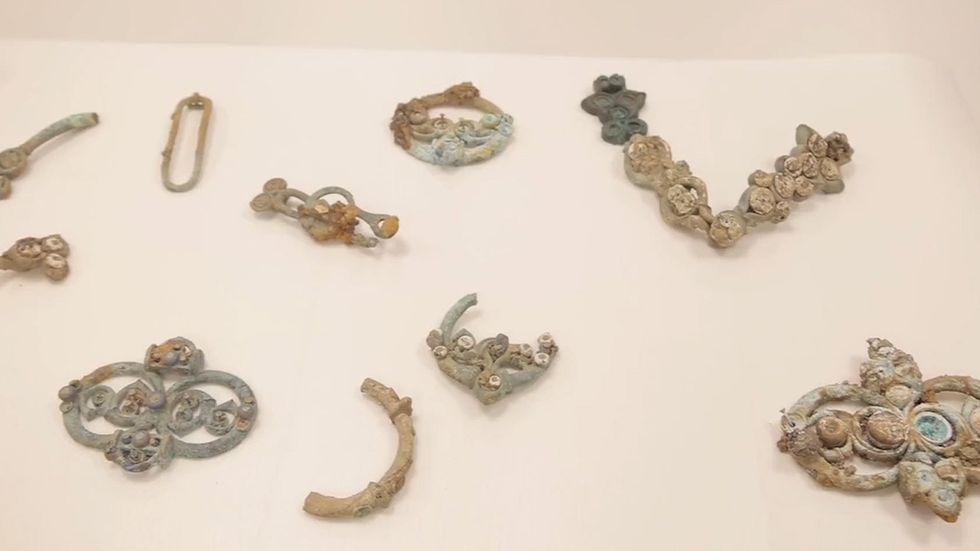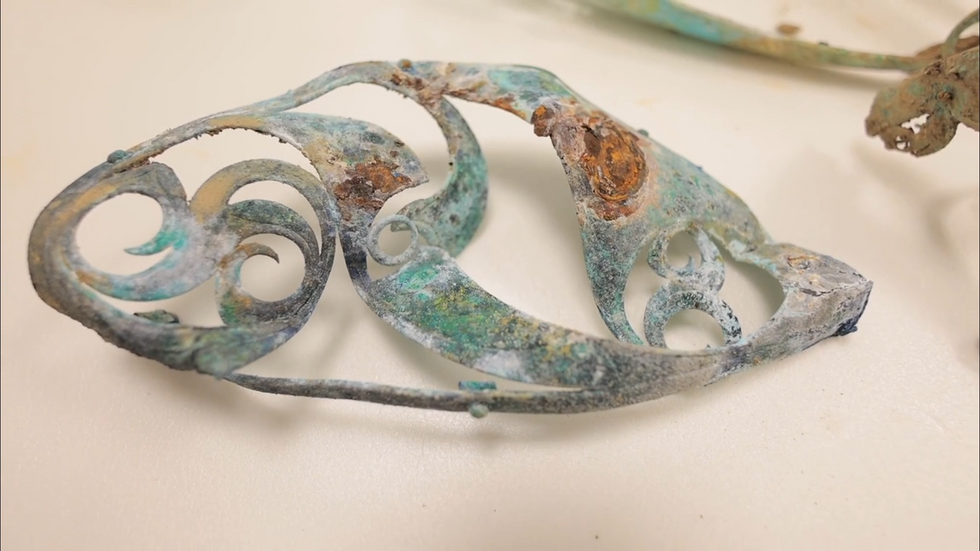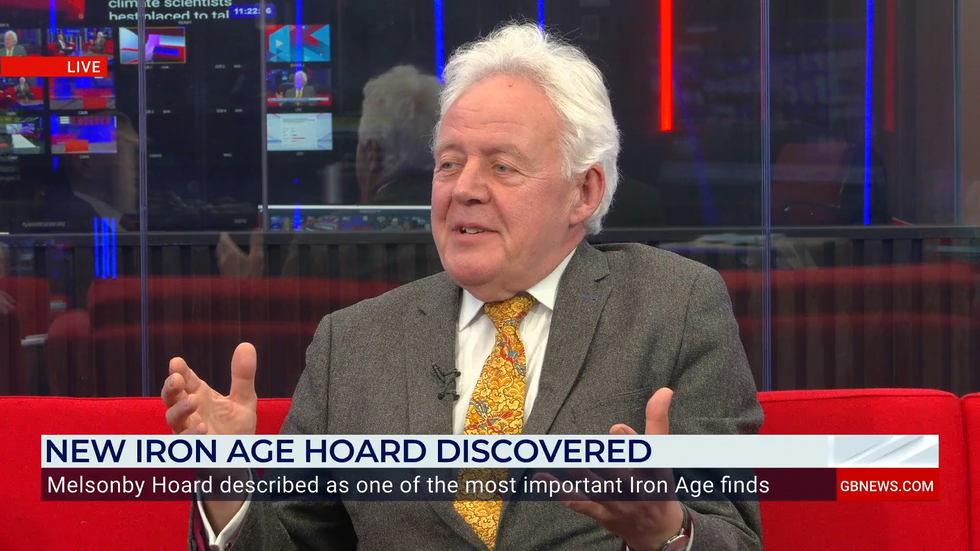Georgia Pearce
Guest Reporter
Archaeologists have uncovered one of the "largest and most important" Iron Age finds in the UK, known as the Melsonby Hoard.
The "unprecedented" discovery was made in a field near Melsonby, North Yorkshire.
It contains more than 800 items believed to have been buried about 2,000 years ago.
Historians believe the remarkable find could lead to a "major re-evaluation" of the wealth and status of the elite living in northern Britain during the Iron Age.

Duncan Wilson, chief executive of Historic England, described the discovery to GB News as "unusual" in its nature and scale.
"It is unusual. And we don't know, because we've got the iron tyres but not the wheels and the vehicles, whether these were wagons or chariots or both," Wilson told host Michael Portillo.
"But to the extent that some of them are almost certainly wagons, then that is a first for Iron Age Britain."
"Quite simply, this is one of the most important and exciting Iron Age period discoveries made in the UK," he added.
LATEST DEVELOPMENTS:

Wilson suggested the items may have ritual significance, possibly representing remains of funeral pyres.
"There have been no human remains found with them, but we know that one of the Iron Age rituals was to deface and burn objects, which would then be presumably taken to the afterlife," he explained.
"It was at the side of the road leading up to the enormous Iron Age Hill Fort of Stanwick," Wilson noted.
Wilson emphasised that the quality of the objects indicates the wealth of their owners.

"These were rich people, and the quality of the objects, the horse bits are quite oversized compared to what we normally find, and they are embossed with coral and enamel," he said.
This craftsmanship is "unusual and indicative of wealth and trade links as far as the Mediterranean."
Tom Moore, head of the department of archaeology at Durham University, called the size and scale of the find "exceptional for Britain and probably even Europe".
"Whoever originally owned the material in this hoard was probably a part of a network of elites across Britain, into Europe and even the Roman world," he said.
Find Out More...
The "unprecedented" discovery was made in a field near Melsonby, North Yorkshire.
It contains more than 800 items believed to have been buried about 2,000 years ago.
Historians believe the remarkable find could lead to a "major re-evaluation" of the wealth and status of the elite living in northern Britain during the Iron Age.

Duncan Wilson, chief executive of Historic England, described the discovery to GB News as "unusual" in its nature and scale.
"It is unusual. And we don't know, because we've got the iron tyres but not the wheels and the vehicles, whether these were wagons or chariots or both," Wilson told host Michael Portillo.
"But to the extent that some of them are almost certainly wagons, then that is a first for Iron Age Britain."
"Quite simply, this is one of the most important and exciting Iron Age period discoveries made in the UK," he added.
LATEST DEVELOPMENTS:
- Mystery 'vanishing island' sparks raft of theories after disappearing from maps - 'Cover up?!'
- Archaeologists baffled after finding 4,800-year-old burial site full of sacrificed teenagers
- Archaeology breakthrough as scientists discover mysterious 2,200-year-old pyramid with ancient coins

Wilson suggested the items may have ritual significance, possibly representing remains of funeral pyres.
"There have been no human remains found with them, but we know that one of the Iron Age rituals was to deface and burn objects, which would then be presumably taken to the afterlife," he explained.
"It was at the side of the road leading up to the enormous Iron Age Hill Fort of Stanwick," Wilson noted.
Wilson emphasised that the quality of the objects indicates the wealth of their owners.

"These were rich people, and the quality of the objects, the horse bits are quite oversized compared to what we normally find, and they are embossed with coral and enamel," he said.
This craftsmanship is "unusual and indicative of wealth and trade links as far as the Mediterranean."
Tom Moore, head of the department of archaeology at Durham University, called the size and scale of the find "exceptional for Britain and probably even Europe".
"Whoever originally owned the material in this hoard was probably a part of a network of elites across Britain, into Europe and even the Roman world," he said.
Find Out More...
